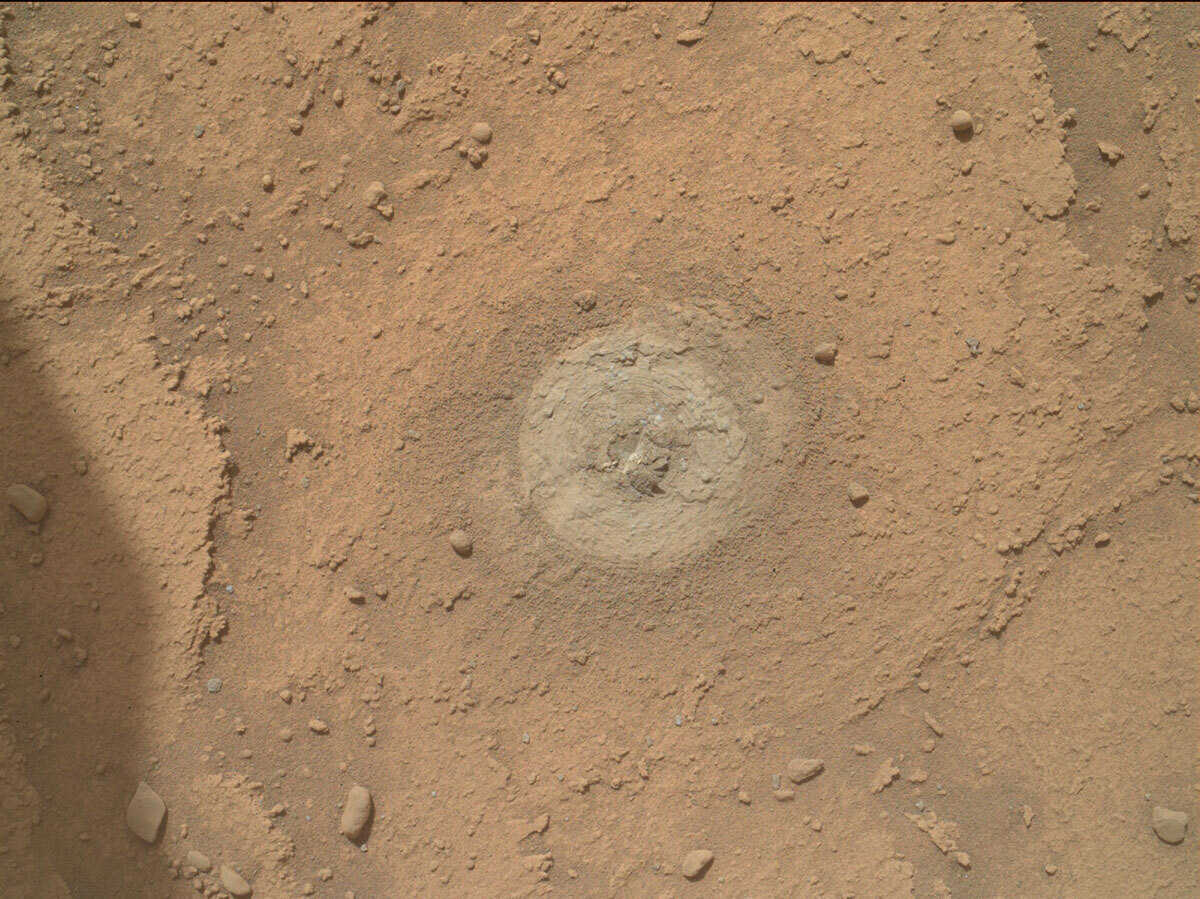3 min read

Yesterday, on our weekly day off from planning, the team awaited Drill Sol 1 triage data to confirm if Tapo Caparo seemed more drillable (as Dr Catherine O'Connell-Cooper described so well on Wednesday’s blog) — or otherwise too hard like our last Marker Band drill attempts at Amapari, Encanto, and Dinira. The MAHLI image taken after the preload test arrived early and showed something we haven’t seen for a while: DRT scratches and a divot from the preload test! This was a good sign that this upper unit of the Marker Band might not be as hard as our last few drill targets in the lower, rippled unit (which did not get deep enough to collect sample). By midday the geochemistry data from APXS and ChemCam came down and both teams went to work analyzing Tapo Caparo’s chemistry to determine if it was distinct enough to warrant gathering sample. After some productive discussion this Friday morning, the team decided wholeheartedly to proceed with Drill Sol 2 and finally (hopefully) get to sampling depth before leaving the Marker Band area for good.
Our modeling tools work extra hard on Drill Sol 2 plans so there’s an incentive to keep things moving early in the day. But since we’ve planned Drill Sol 2 four other times in the past ~three months, our team knew exactly what to do to make planning go as smooth as possible. As our Rover Planner Lead, Ashley Stroupe, described in the Sol 3676 blog (our first Amapari drill attempt), drilling takes a lot of rover energy and pre-drill planning is kept to a minimum. So, we’re using sol 3752 for our full drill including lots of documentation imaging during and after. The only non-drill activities on that sol will be some DAN subsurface measurements and a Navcam twilight cloud survey since we’re still in Mars twilight cloud season (check out this NASA blog from 2016 with pretty plots of Gale Crater seasonal cycles).
Sol 3753 will be filled with remote science: Mastcam taking the lead for data volume with >60 full images taken midsol, ChemCam following close behind with 21 RMI frames, some afternoon Mastcam images showing the atmospheric opacity near the sun, and lastly a MARDI image at 19:00 local Mars time to hopefully get better exposure on what’s under us than what we took on sol 3749. In the middle of all this remote science, an early-afternoon arm block contains test sample drop-off activities to the closed SAM inlet, assuming the drill succeeds and sample is collected. On the last sol, more time is dedicated to remote science with lots more Mastcam images, ChemCam LIBS and RMI, and Navcam’s usual long-distance movies to maybe catch dust devils and other atmospheric occurrences. We had a sholiday (soliday + holiday) last weekend, so Earth and Mars are pretty in-sync right now with timing. That means our drill data should come down ~11am Saturday (tomorrow) morning, whatever the outcome!
For fun, here’s a nice view of APXS during the DRT of Tapo Caparo, before any other contact science was accomplished. I also love these Hazcam images of 1. APXS touching a ripple crest from sol 3749 (planned Tuesday) and 2. Backward facing view of our Tapo Caparo drill location, showing the beautifully laminated blocks we are next to. For color context, here’s a Mastcam Left image of a similar block taken mid-drive to the Tapo Caparo drill location.
Written by Natalie Moore, Mission Operations Specialist at Malin Space Science Systems







